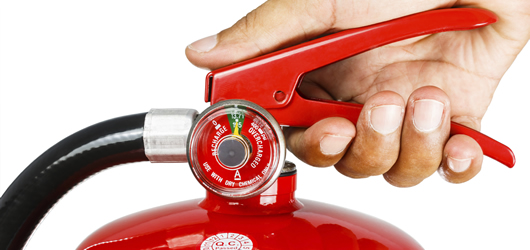Fire Safety
.
Essential fire safety services are active measures to afford protection of a building and the safe evacuation of persons in the event of a fire emergency.
Annual Fire Safety Statement
Every year the owner of a building or premises (including residential flat buildings, commercial, industrial or public buildings that are class 2 – 9 Building Code of Australia) must provide Council and Fire & Rescue NSW with a statement certifying that all essential fire-safety measures are properly maintained and functional. When completed, the statement must be displayed in a prominent position in the building.
All building owners and property managers must maintain essential fire safety measures in their buildings, as outlined in the Environmental Planning and Assessment (Development Certification and Fire Safety) Regulation 2021.
Clause 81 of the Regulation requires the owner of a building maintain each essential fire safety measure in that building in accordance with relevant standards of performance. The standards of performance are found in the Fire Safety Schedule for the building. The Fire Safety Schedule for the building forms part of either a change of use development consent, construction certificate, complying development certificate or fire safety order.
This clause places ultimate responsibility for the maintenance of fire safety measures on the building owner.
Apart from legal requirements, other vital reasons for maintaining fire safety measures include:
- ensuring safety of building occupants;
- preserving the function and performance of fire safety systems and equipment;
- maintaining and protecting assets – proper preventative maintenance can save money; and
- avoiding business interruption and disruption to activities/operations in the event of fire.
Building owners will need to select an APFS - Accredited practitioner (fire safety) or a registered certifier to undertake the necessary assessments and inspections before an annual statement or supplementary fire statement is issued.
For further information about APFS, please visit the NSW Planning Website.
The assessment and inspection of the essential fire safety measures must have been carried out within the three-month period prior to the issue date of the annual fire safety statement.
Once an APFS has assessed each measure and the owner has signed and completed the statement, lodge the statement with Council and with Fire & Rescue NSW via their website at: Annual Fire Safety Statement Lodgement. Please note there is an administration fee payable to Council for lodging this statement.
Fire safety certificate
For new or altered buildings, upon the completion of work and prior to occupation, a fire safety certificate must be provided to Council & Fire and Rescue NSW via their website at: Lodge a fire safety certificate. The fire safety certificate verifies the installation of each new or altered essential fire safety measure.
Within 12 months after the date of the fire safety certificate, an annual fire safety statement must be provided to the Council. This process is ongoing and each year an annual certificate must be submitted within 12 months of the last statement.
Fire safety schedules
Fire safety schedules list the measures required to be installed and the standard they need to achieve. A fire safety schedule is normally issued:
- by Council or an accredited certifier in accompaniment of a construction certificate or complying development certificate
- by Council in accompaniment of a fire safety order
- by Council in some cases with a development consent (where there is a change of building use).
Essential Fire Safety Measures
Essential fire safety measures include installations, equipment or forms of construction that will protect occupants of a building in the event of emergencies. They include but are not limited to the following examples:
- automatic fire detection and alarm systems
- automatic fire suppression systems, such as sprinkler systems
- emergency lighting and exit signs
- fire hose reels, fire hydrants and portable fire extinguishers
- fire doors and mechanical air-handling systems
- lightweight fire-resistant construction materials
Offences and Penalties
Failure to supply an AFSS is an offence under 89(1) of the Environmental Planning and Assessment (Development Certification and Fire Safety) Regulation 2021, for which the following penalties apply:
- 1 week late $1,000
- 2 weeks late an additional $2,000
- 3 weeks late an additional $3,000
- 4 weeks late an additional $4,000
Please note, where a penalty notice is issued to a property owner, an AFSS is still required to be submitted.
In circumstances where an AFSS cannot be submitted on time, a request for an extension must be sought prior to the due date. To support your application, you are required to provide a timeline for the completion of works and supporting documentation such as defect reports and quotations. Where possible a partial statement should be submitted. Please note that Council is unlikely to approve applications involving poor building site management.
Combustible Cladding
Lightweight cladding in its predominant form of aluminium sandwich panels can permit the spread of fire rapidly along the external façade of a building posing a risk to public health and safety. Multi storey buildings are particularly at risk from the rapid spread of fire where lightweight cladding has been fixed and connects consecutive storeys.
For further information about combustible cladding, please visit the NSW Planning Website.







